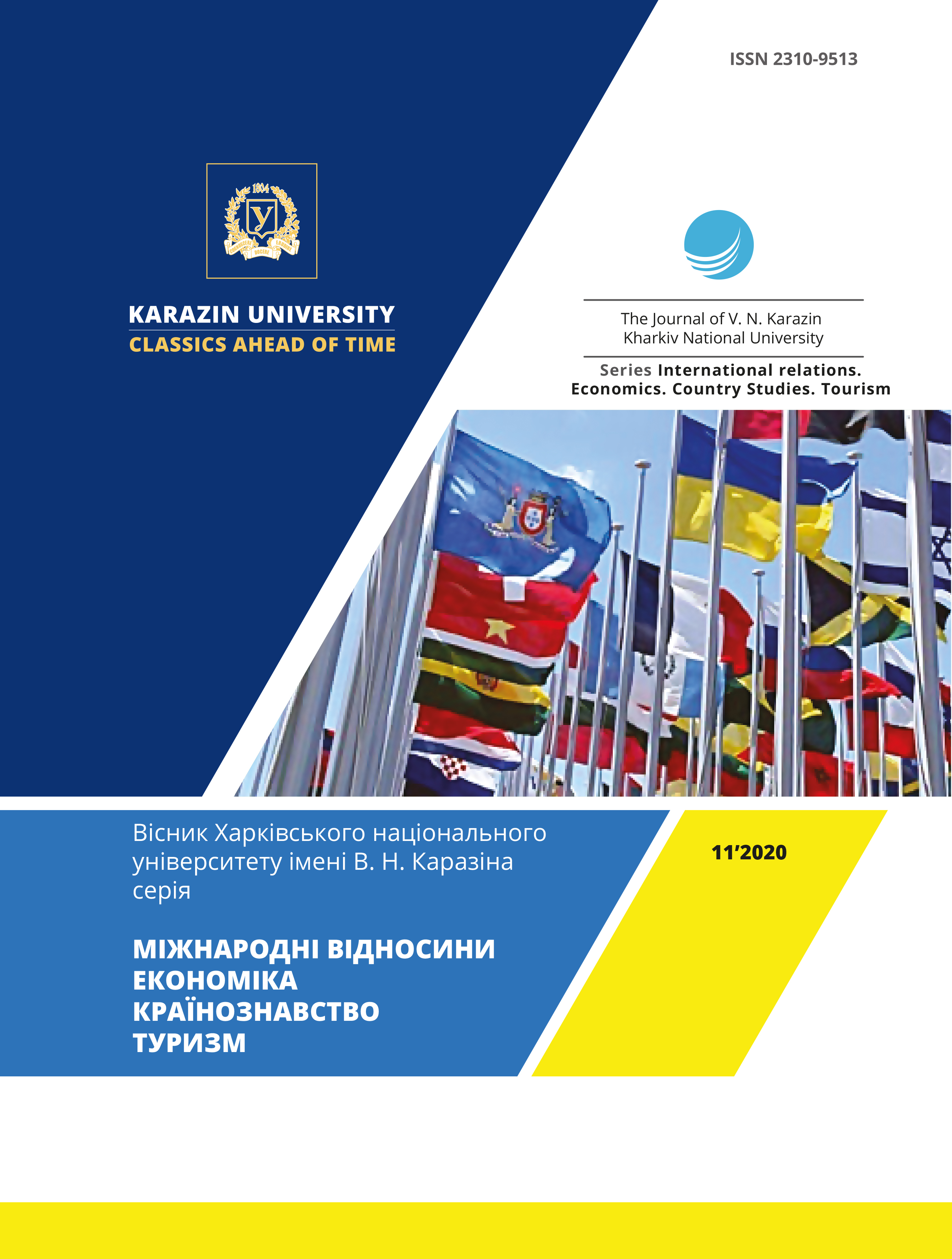Аpplication of the EU experience of the financial systems’ transformation in the context of the debt crisis for Ukraine
Abstract
Transformation of financial systems is an extremely important process because the stability of the world economy depends on their adequacy, balance and efficiency. The financial systems of the EU countries have undergone a number of transformations, during which new mechanisms to strengthen economic governance were created. However, not all problems have been solved yet. The debt crisis has revealed existing weaknesses in the structure, thus provoking the need to strengthen the financial architecture by solving existing problems, while identifying and preventing possible future threats. The subject of research of the article is main directions of the transformation of the European financial system in the context of the debt crisis. The goal is to summarize the EU financial systems’ main directions of transformation in the context of the debt crisis and to identify the possibilities of their application for Ukraine. General scientific methods are used, such as system analysis which allowed to collect and systemize statistical data on EU countries and Ukraine for further analysis, correlation analysis and trend analysis, which allowed to determine the cumulative effect of unsecured bank loans and long-term government bonds yields of the EU countries and Ukraine on the level of their public debt. The following results were obtained: correlation analysis show the existence of correlation between unsecured bank loans and long-term government bonds yields of the EU countries and Ukraine with the level of their public debt. Conclusions: there are quite a lot of possibilities of application of the EU experience of the financial systems’ transformation for Ukraine. One of the basic is introduction of annual banks stress testing; further convergence of banking sector regulation to the requirements of Basel 3 and implementation of LCR; initiation of the process of creating a single mega regulator of the financial market.
Downloads
References
Allen, F., Bartiloro, L., & Kowalewski, O. (2005). The financial system of the EU 25. WFIC Working Paper. doi:10.2139/ssrn.871454.
Davies, R., & Studnicka, Z. (2018). The heterogeneous impact of Brexit: Early indications from the FTSE. European Economic Review, 110 (C). doi: 10.1016/j.euroecorev.2018.08.003.
Derid I., Khanova O., Makarchuk K., Shuba M. (2019) Transformation of the financial systems of the EU countries in the context of the debt crisis: experience for Ukraine. Contemporary issues in economy. Proceedings of the 10th International Conference on Applied Economics Contemporary Issues in Economy: Finance. Toruń, Poland. P. 31-44. doi: 10.24136/eep.proc.2019.2
European Central Bank. The Transformation of the European Financial System: Second ECB Central Banking Conference (October 2002). Available at: https://www.ecb.europa.eu/pub/pdf/other/transformationeuropeanfinancialsystemen.pdf?6e768151ee38d21d95bc69d456fe4f94.
European Commission (2018). The European system of financial supervision. Available at: https://ec.europa.eu/info/business-economy-euro/banking-and-finance/financial-supervision-and-risk-management/european-system-financial-supervision_en.
Eurostat (2017). Statistics. Available at: https://ec.europa.eu/eurostat.
Fred Economic Data (2017). Long-Term Government Bond Yields: 10-year for: Germany, France, Greece, Ireland, Italy, Portugal, Spain. Available at: https://fred.stlouisfed.org/series/IRLTLT01DEM156N.
Hohlmeier, M., & Fahrholz, C. (2018). The Impact of Brexit on Financial Markets – Taking Stock. International Journal of Financial Studies, 6 (3). doi:10.3390/ijfs6030065.
Kundera, J. (2013). Euro Crisis and the EMU Institutional Reforms. Equilibrium. Quarterly. Journal of Economics and Economic Policy, 8 (1). doi:10.12775/EQUIL.2013.001.
Lajtkepová, E. (2016). Differences and similarities in the indebtedness of EU member states after last financial crisis. Oeconomia Copernicana, 7 (4). doi:10.12775/OeC.2016.031
Llorent, J., Melgar, M., Ordaz, J., & Guerrero, F. (2013). Stress Tests and Liquidity Crisis in the Banking System. Equilibrium. Quarterly Journal of Economics and Economic Policy, 8 (2). doi:10.12775/EQUIL.2013.012.
Maier, M. (2013). Potential Instruments That the ECB Could Take in Order to Face the Euro Zone Crisis. Equilibrium. Quarterly Journal of Economics and Economic Policy, 8 (1). doi.org/10.12775/EQUIL.2013.002.
McConnell,C. R., Brue, S. L., & Flynn, S. M. (2009). Economics: Principles, Problems, and Policies. New York. McGraw-Hill/Irwin.
Miklaszewicz, S. (2016). Sovereign debt crisis of the Eurozone countries. Oeconomia Copernicana, 7 (3). doi:10.12775/OeC.2016.021.
Ministry of Finance of Ukraine (2017). Government debt. Available at: https://www.minfin.gov.ua/.
Mooslechner, P. (2004). The Transformation of the European Financial System. A Brief Introduction to Issues and Literature. OeNB Workshops, 1, 7–22.
Núñez-Ferrer, J., & Rinaldi, D. (2016). The Impact of Brexit on the EU Budget: A Non-Catastrophic Event. CEPS Policy Brief, 347. Available at: papers.ssrn.com/sol3/papers.cfm?abstract_id=2859407.
Oesterreichische Nationalbank (May 2017). The financial system of the future. Available at: https://www.suerf.org/docx/r_ec1c59141046cd1866bbbcdfb6ae31d4_4657_suerf.pdf.
Shuba, M. (2017). The unification of national banking systems regulation in the EU countries: experience for Ukraine. Economic Annals-XXI, 168 (11-12). doi: 10.21003/ea.V168-03.
The European Banking Authority (EBA) (2019). Available at: https://eba.europa.eu/regulation-and-policy/single-rulebook.
The European Securities and Markets Authority (ESMA) (2018). MiFID II/MiFIR. Available at: https://www.esma.europa.eu/policy-rules/mifid-ii-and-mifir.
The European Stability Mechanism (2012). Available at: https://www.esm.europa.eu/about-us/history#context.
The World Bank (2017). Bank nonperforming loans to total gross loans. Available at: https://data.worldbank.org/indicator/FB.AST.NPER.ZS.
UNEP Inquiry (March 2016). Building a Sustainable Financial System in the European Union: the five ‘R’ s of market and policy innovation for the green transition. Available at: http://unepinquiry.org/wp-content/uploads/2016/04/Building_a_Sustainable_Financial_System_in_the_European_Union.pdf.
Zoppè, A., & Dias, C. (2019). The European Stability Mechanism: Main Features, Instruments and Accountability. Available at: http://www.europarl.europa.eu/RegData/etudes/BRIE/2014/497755/IPOL-ECON_NT(2014)497755_EN.pdf.
Authors who publish with this journal agree to the following terms:
- Authors retain copyright and grant the journal right of first publication of this work under the terms of a license Creative Commons Attribution License 4.0 International (CC BY 4.0).
- Authors are able to enter into separate, additional contractual arrangements for the non-exclusive distribution of the journal's published version of the work (e.g., post it to an institutional repository or publish it in a book), with an acknowledgement of its initial publication in this journal.
- Authors are permitted and encouraged to post their work online (e.g., in institutional repositories or on their website) prior to and during the submission process, as it can lead to productive exchanges, as well as earlier and greater citation of published work.




